The floods and timber logs that caused major damage in Pahang last December have raised concerns regarding deforestation in the state due to logging and forest clearing for plantations.
Environmental groups have highlighted the adverse impact of the plantations as they involved large swathes of forest land while the “clear-cutting” strategy results in severe ecological harm.
Unlike selective logging where only wood that is valued is chosen, clear-cutting sees the felling of all trees.
Macaranga, an environmental media site, estimated that between 2007 and 2019, Pahang cleared 75,748 hectares of forest for plantation, second only to Kelantan.
Surprisingly, the Department of Environment's (DOE) records showed there were no large-scale (more than 500 hectares) forest plantation projects in Pahang throughout last year.
However, an environmentalist said some developers exploited a loophole by dividing a major project into several pieces in order to avoid publicising their Environmental Impact Assessment (EIA) reports.
To verify this, Malaysiakini looked into medium-sized forest plantation projects which cover 100 to 500 hectares.
It was discovered that among the DOE-approved projects for last year, forest plantations topped the list with 18 and all of them were medium-sized projects.
Fajarbaru-related companies
Of the 18, seven of the projects were related to Fajarbaru Builder Group Berhad, a public-listed firm with roots in the construction sector but later shifted to logging and plantation in 2010.
Fajarbaru raised RM37.4 million through the issuance of warrants in September last year, of which some RM15 million would be invested in “business expansion, logging, timber trading and plantation”.
The firm's 2021 annual report revealed that its plantation arm was established in 2019 and that it believed involvement in durian plantations would increase and diversify revenue.
Fajarbaru's executive chairperson is former MCA deputy president Chan Kong Choy. Prior to his appointment last December, he served as the independent and non-executive chairperson.
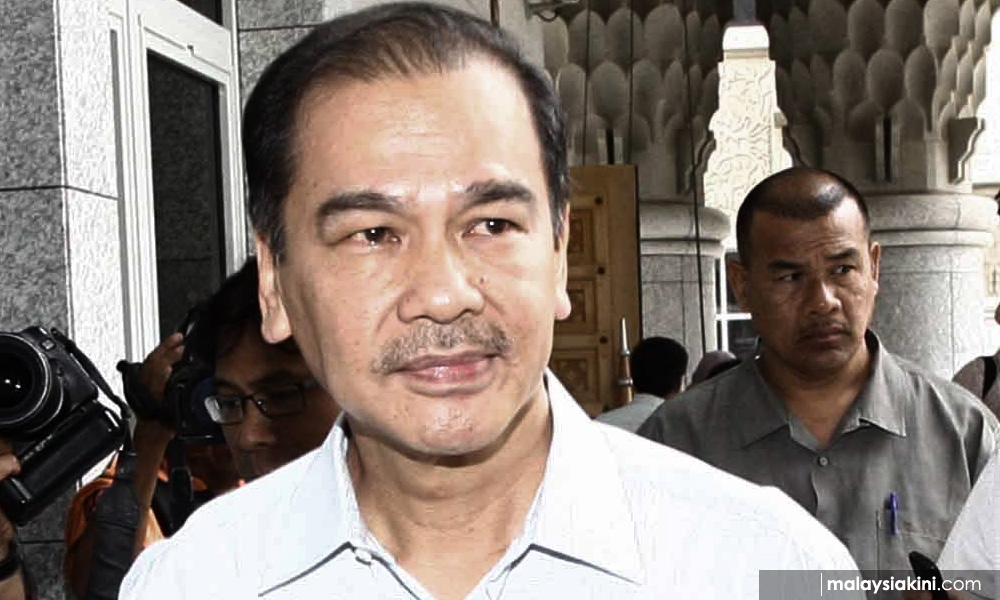
During his tenure in politics, Chan, 66, held various government portfolios such as transport minister, deputy finance minister, deputy communications minister and deputy tourism minister.
Land the size of 4,000 football fields cleared
Records showed that Fajarbaru cleared 2723.09 hectares of land in the Tekam Forest Reserve and Tekai Tembeling Forest Reserve through its subsidiaries or companies owned by shareholders and staff.
This accounted for 12 percent of Pahang’s total forest plantation area for 2021. According to the Pahang Forestry Department, there were 22,987 hectares of forest plantation land last year.
Despite the projects related to Fajarbaru amounting to the size of 3,813 football fields, their EIA reports were not required to be made public.
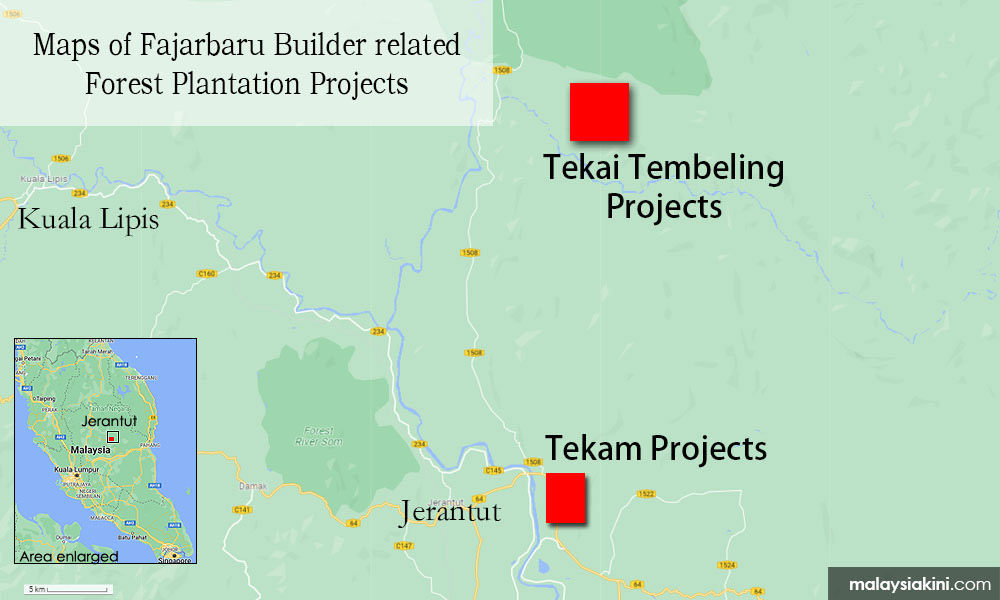
Smaller projects to avoid public scrutiny
According to the Environmental Qualities (Prescribed Activities) (Environmental Impact Assessment) Order 2015, the area of a forest plantation project would determine its EIA category:
Projects that cover areas less than 100 hectares (approximately 247 acres) are not required to submit an EIA report;
Medium-sized projects that cover areas between 100 to 500 hectares (approximately 1,235 acres) would be categorised as Schedule 1. Developers are required to submit an EIA report but do not need to publicise and get public feedback;
Large-scale projects which cover areas more than 500 hectares would be listed as Schedule 2. Developers are required to submit and publicise EIA reports and gather public feedback.
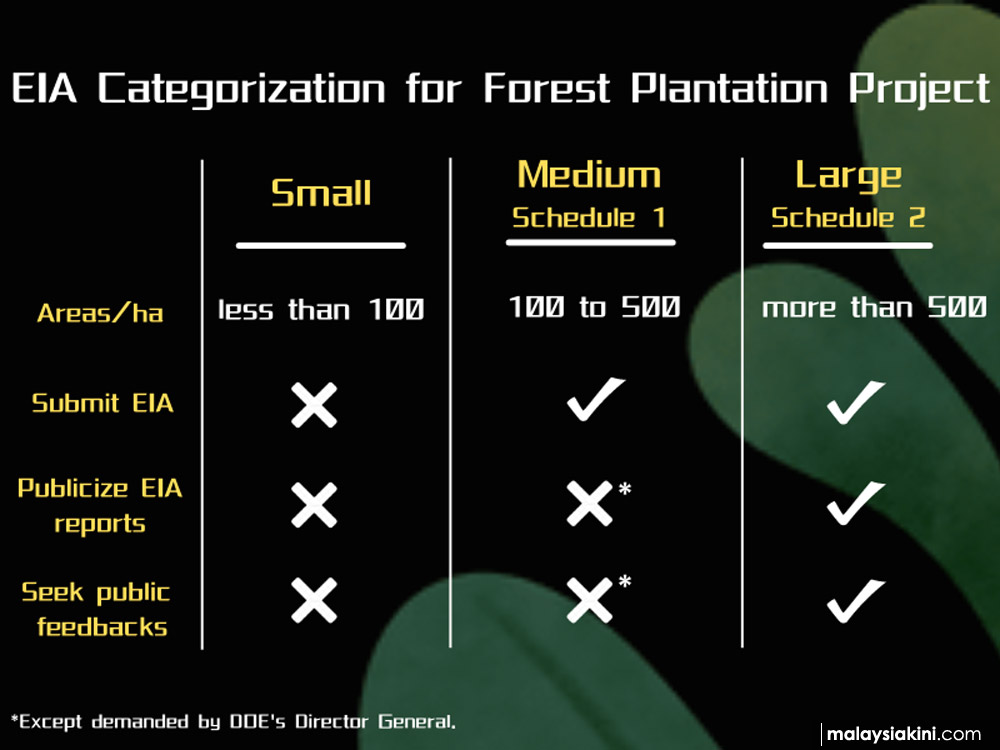
Five hundred hectares is an important threshold to decide if a project would be open to public objections.
Sahabat Alam Malaysia (SAM) field researcher Meor Razak Meor Abdul Rahman told Malaysiakini that developers would employ two tactics - not apply for projects involving more than 500 hectares or dividing and splitting a large-scale project into several medium-sized projects, each covering less than 500 hectares.
“Some developers will split it into several projects, the EIA reports will be submitted by several companies, but in fact, the licence holder is the same person.
“They are doing this to avoid the EIA report from being publicised,” he pointed out.
As a result of this, Meor said communities living near a project area remained in the dark until clearing activities commenced.
Based on the public records sighted by Malaysiakini, Fajarbaru was indirectly involved in several forest plantation projects in Jerantut’s forest reserves - Tekam and Tekai Tembeling.
In both forests, Fajarbaru’s plantation projects were divided into smaller projects and their EIA reports were submitted separately by its subsidiaries and affiliates.
Three separate EIA reports for neighbouring projects
In the Tekam forest near Jerantut town, three developers submitted three EIA reports last April to obtain approval for developing forest plantation projects.
The companies were Kerjaya Jutamas Sdn Bhd, Akokaya Sdn Bhd and KJM Plantation Sdn Bhd. Their projects covered 406.52, 435.80 and 419.90 hectares respectively.
These projects were listed under Schedule 1 as they involved an area of less than 500 hectares.
Since the developers were not required to publicise the EIA reports, Malaysiakini was unable to obtain the specific locations of the projects.
However, Malaysiakini managed to glimpse these projects through the EIA reports of other plantation projects in adjacent forests.
Last December, another firm - Glowing Green Plantation Sdn Bhd - applied to develop a forest plantation project in Jenderak and a map attached in its EIA report clearly stated the locations of the three Fajarbaru-related projects.
According to the map, the three projects covered 1262.22 hectares (approximately 1,767 football fields) and were located next to each other.
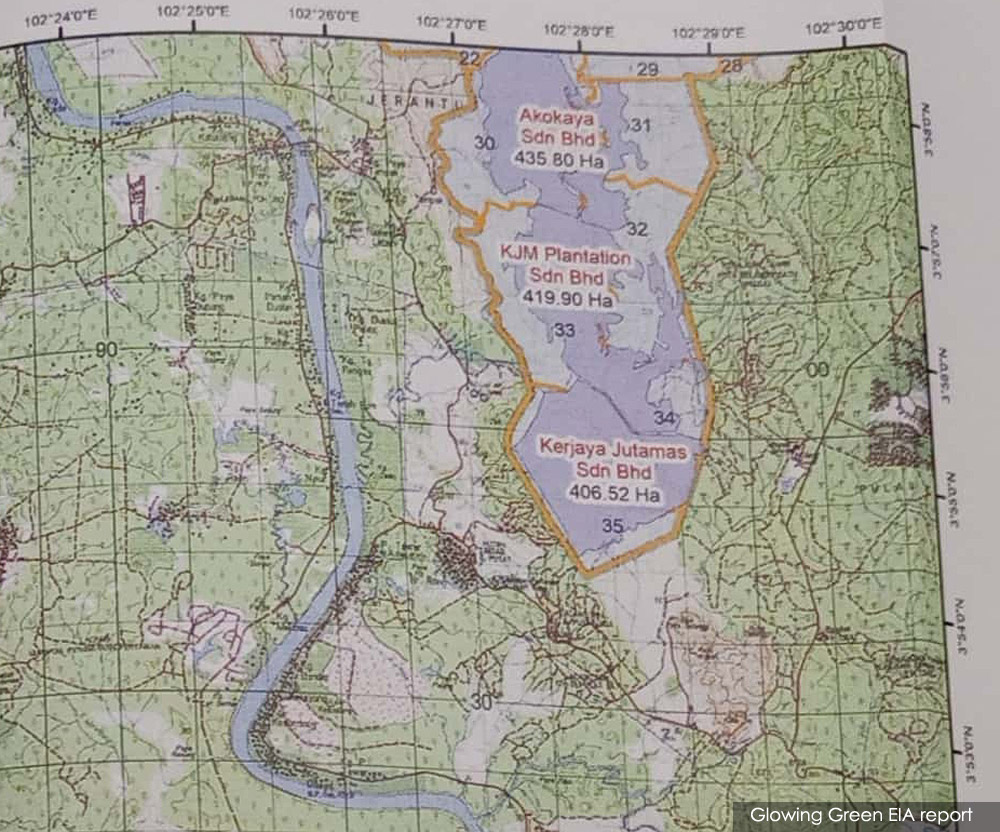
Closely linked to MCA leaders
According to Fajarbaru's annual report and the Companies Commission of Malaysia's (CCM) records, the three firms were closely linked to Fajarbaru.
Kerjaya Jutamas is a subsidiary of Fajarbaru (20 percent shares). Other shareholders include Lim Siew Mei (30 percent), Chan Kong Choy, Fajarbaru group executive director Lau Kuan Kam and Pahang MCA chairperson Hoh Khai Mun.
Siew Mei’s father is Jerantut timber tycoon Lim Ah Chap and her sister is the former Jerantut district councillor Natalie Lim Chong Ly.
Natalie was the MCA/BN candidate for the Damak state seat in the 2018 general election. She currently chairs MCA's Crisis Relief Squad (CRSM).
As for the second developer Akokaya, Siew Mei only holds 0.001 percent shares while the rest is controlled by her mother Leong Swee Peng.
For the third developer KJM Plantation, it is owned by Ng Kok Wai, who was Chan's press aide when the latter served as transport minister.
A Sin Chew Daily report last November revealed that Kok Wai was also the senior managing director of Smooth Accomplishment Sdn Bhd, another subsidiary of Fajarbaru.
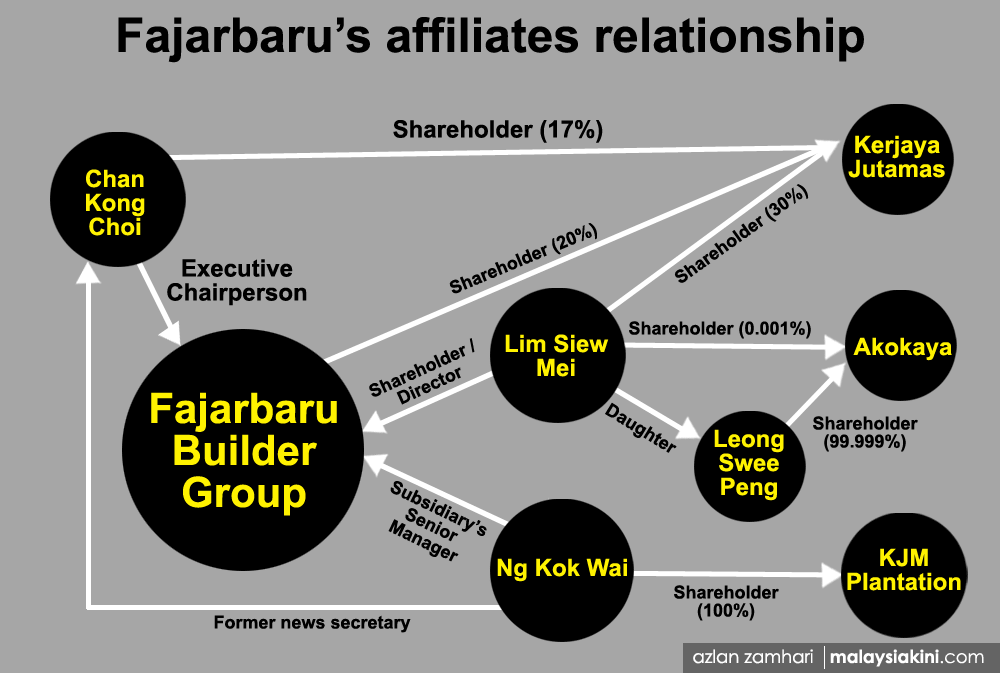
Another case of dividing projects
Another example of splitting a large-scale project was in Tekai Tembeling, a forest reserve located some 35km north of Jerantut town.
Four companies closely linked to Fajarbaru applied to develop plantations in the forest reserve.
On March 2, 2021, KJM Plantation, together with two other companies - Gelombang Sumber Sdn Bhd and Peacock Plantation Sdn Bhd - submitted three Schedule 1 EIA reports in relation to forest plantation projects in Tekai Tembeling Forest.
Both KJM Plantation and Gelombang Sumber are owned by Kok Wai while Peacock Plantation belongs to Charles Tan Ting Lih, Fajarbaru’s finance director.
A month later, Fajarbaru's subsidiary - Kerjaya Jutamas - submitted another EIA report in order to conduct plantation activities in the same forest.
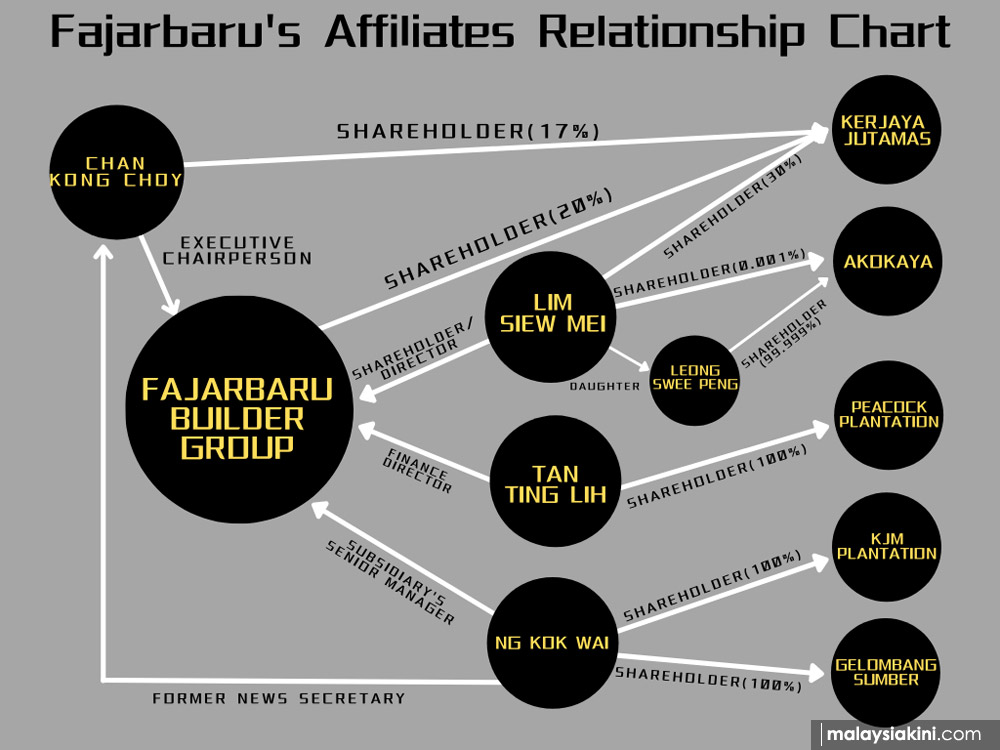
These projects involved 346.10 hectares (KJM Plantation), 295.56 hectares (Gelombang Sumber), 336.21 (Peacock Plantation) and 483 hectares (Kerjaya Jutamas).
The total forest reserve land targeted for clearing was 1,460.89 hectares, approximately the size of 2,046 football fields.
As the projects were submitted separately and categorised as Schedule 1, there was no need to seek public feedback.
As before, Malaysiakini only had a glimpse of their locations through other EIA reports.
In February 2020, a subsidiary of Lembaga Tabung Haji submitted a Schedule 2 EIA report in order to start an oil palm plantation near Tekai Tembeling.
A map attached in the report showed other neighbouring forest plantation projects, including the four linked to Fajarbaru.
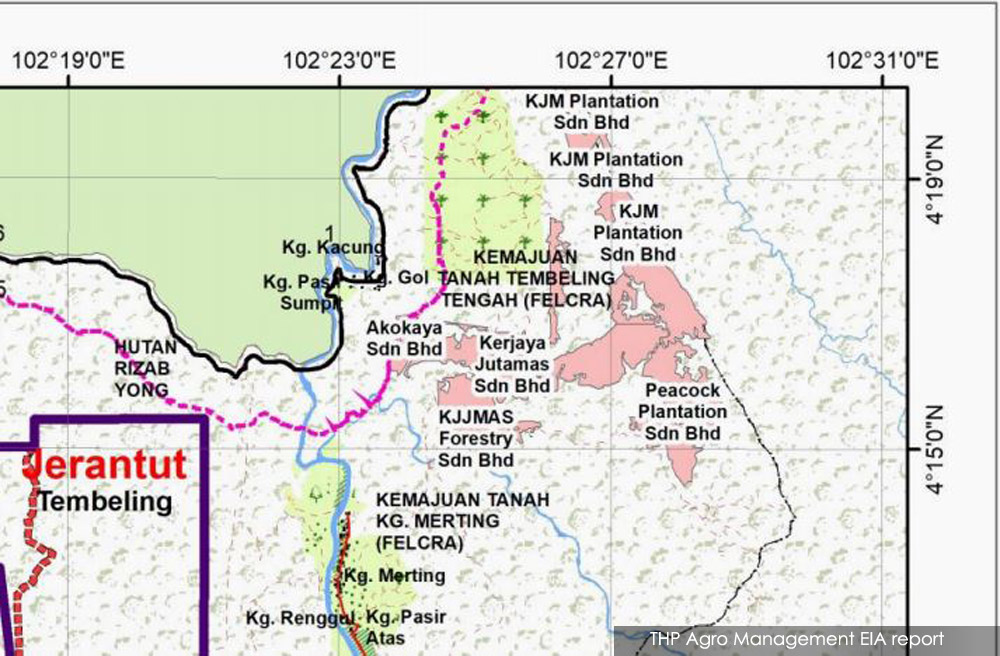
According to the map, the four projects were located close to each other and this raised questions on the need for separate applications.
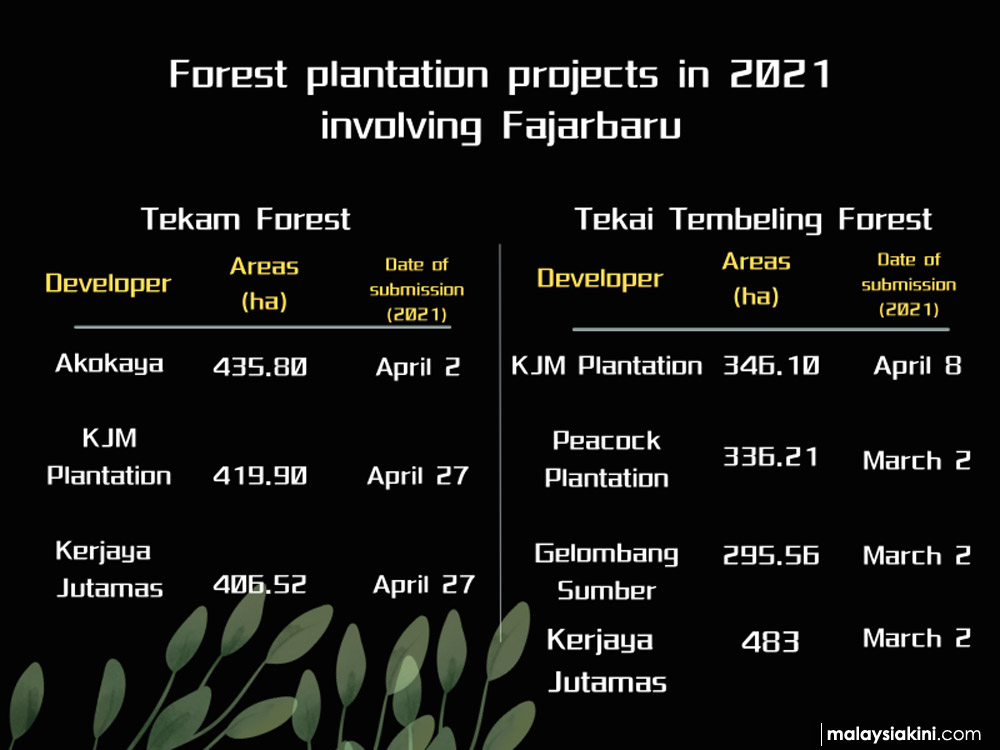
Firm pledges accountability, openness
In order to prevent firms from exploiting this loophole, Meor suggested that the “Environmental Qualities (Prescribed Activities) (Environmental Impact Assessment) Order 2015” be amended to ensure that all forest plantation projects submit and publicise their EIA reports.
“This is to ensure all monoculture plantation projects, regardless of size, are categorised as Schedule 2 EIA because it will impact ecological function and biological diversity,” he added.
Nonetheless, Fajarbaru has stated its commitment to the highest standard of integrity, accountability and openness in its businesses and operations and pledged to conduct its affairs in an ethical, responsible and transparent manner.
Fajarbaru also listed “communities” as one of its missions and aimed to create a sustainable future for stakeholders by promising "to preserve the environment, to be responsible, and to be active in the development of a better society and economy".
Malaysiakini has reached out to Fajarbaru, its affiliates and DOE for their responses. - Mkini




No comments:
Post a Comment
Note: Only a member of this blog may post a comment.